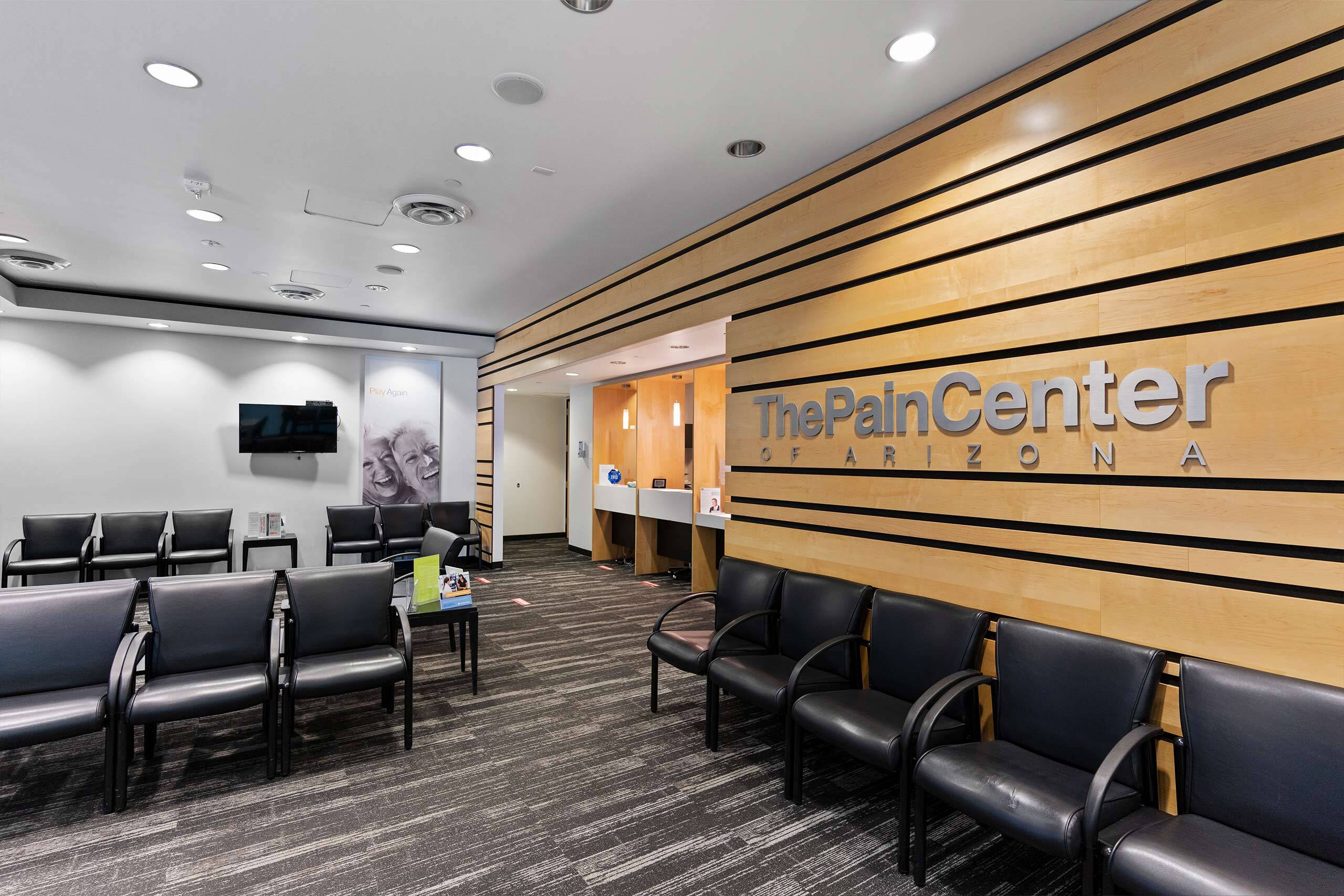Facet Rhizotomy
Facet rhizotomy, also commonly referred to as radiofrequency ablation, is a minimally invasive procedure that uses electrical currents to destroy nerve fibers carrying pain signals to the brain. Patients with chronic neck, arm, low back, or leg pain that stems from damaged facet joints may be considered candidates for facet rhizotomy. During the procedure, a physician uses a fluoroscope (special x-ray device) and hollow catheter to insert a radiofrequency probe into the sensory nerves located on damaged facet joints. When the probe is in place, the physician will administer radiofrequency energy to heat the tip of the probe. This heat lesion deadens the damaged nerve fibers, reducing pain. Patients may experience several weeks or months of pain relief following facet rhizotomy.


What is Facet Rhizotomy?
Facet joint rhizotomy, also commonly referred to as radiofrequency ablation (or radiofrequency rhizotomy), is a minimally invasive surgical procedure that uses electrical currents to destroy affected nerve fibers carrying pain signals to the brain.
Patients with chronic neck, arm, low back, or leg pain that stems from damaged facet joints may be considered candidates for facet joint injections.
What Types of Pain Does Facet Rhizotomy Treat?
Chronic neck, arm, lower back, and leg pain from damaged facet joints in your spinal cord.
What are Facet Joints?
Facet joints are located in between vertebrae and are responsible for bending and twisting the spine.
These joints are surrounded by medial branch nerves, which carry pain signals from the spine to the brain.
Over time, facet joints may become worn down from aging, or degenerative conditions such as arthritis and osteoporosis.

How Does Facet Rhizotomy Work?
During the procedure, a physician uses a fluoroscope (a special x-ray device) and a hollow catheter to insert a radiofrequency probe into the sensory nerves located on your damaged facet joints.
When the probe is in place, the physician will administer radiofrequency energy to heat the tip of the probe. This heat lesion deadens the damaged nerve fibers, reducing pain.
Patients may experience several weeks or months of pain relief following facet rhizotomy.
What Causes Chronic Back Pain?
Oftentimes, spinal issues typically cause only back pain. It could be caused by simply a muscle strain or other muscular problems, but there’s a wide range of possible causes, including:
- Ligament strain
- Herniated or ruptured discs
- Arthritis
- Fibromyalgia
- Skeletal structure problems, including bone fractures or bone spurs
- Osteoporosis
What Symptoms of Back Pain Should I Watch Out For?
Acute back pain typically lasts up to three months, whereas chronic pain lasts longer. Report all your symptoms to your doctor, especially acute or chronic back pain symptoms such as:
- Muscle ache
- Shooting, stabbing, or dull pain
- Pain radiating toward the neck or down the legs
- Decreased range of motion and flexibility
- Pain reduction with rest or minimal movement
Other Conservative Treatments for Back Pain
Other procedures typically performed to treat chronic back pain include:
- Epidural Steroid Injections
- For short-term pain relief (typically 3-4 months), steroid injections can be used to treat neck pain and can be combined with physical therapy and exercise for maximum benefit.
- Nerve Blocks
- Therapeutic nerve blocks contain local pain medications that can control acute pain.
- Radiofrequency Ablation (Rhizotomy)
- A minimally invasive procedure in the neck, middle or lower back, that destroys nerve fibers in the back that carry pain signals. It is performed under fluoroscopy (live x-ray).
- Spinal Cord Stimulation
- If other therapies aren’t effective for treating your pain, an implantable pain management device can be an option. These devices administer mild electrical pulses to block the transmission of pain.

How Does TPC Spine Relief Work?
TPC Spine Relief offers two effective solutions for degenerative conditions of the bones.
The first is in those facet joints, where we typically start with radiofrequency ablation/ endoscopic rhizotomy or the Intracept Procedure by Relievant for vertebral bodies with a degenerative condition. Both of these are ablative procedures where we target specifically the medial branch for the facets or the basivertebral nerve for the vertebral bodies.
These nerves have nothing to do with having feeling or strength in your legs; these are nerves that specifically serve the function of activating the pain sensation produced by degenerative facet joints or vertebral bodies.
There are ultimately three basic kinds of pain: bone pain, muscle pain, and nerve pain.
Simply put, the spine comprises several components, these vertebral bodies are separated by these spongy discs – cushions – but if you flip around and look at the spine from the back, there are small joints called facet joints. These joints allow you to flex forward and extend backward and twist and turn side to side. When there is a degenerative change in these joints, it can be as painful as osteoarthritis of the knee or hip.
The first, more common approach is radiofrequency ablation. There are small little nerves called medial branch nerves, and there are two medial branch nerves that support or give innervation to every single facet joint in your body. Radiofrequency ablation is a simple way, under live X-ray, to place a small needle with a heated tip to destroy the problematic medial branch nerves. It is a very effective procedure but doesn’t always give enough relief. A radiofrequency ablation typically should give you at least six to 12 months of relief.
Another application for TPC Spine Relief is when the vertebral bodies, the structural foundational bones and supports of the spine, bang into each other because its shock absorbers have worn down. We look at images, and we find what’s called modic changes, and those just speak to how intense the degenerative change or how intense the inflammation is. There’s an outpatient procedure that we do, under live X-ray guidance, known as the Intracept Procedure, where we place a small needle down to the bone where there’s a nerve within the rim called the basivertebral nerve. We heat up and destroy that nerve within the bone, effectively relieving axial pain.

Expectations and Recovery
TPC Spine Relief is an endoscopic rhizotomy, meaning through live X-ray guidance and the assistance of a small microscopic camera, we can visually pinpoint the medial branch nerve(s) that are sending the pain signals. At that point, we clip it, burn it, and destroy that nerve with visualization, which is profoundly different than simply putting the tip of a needle within proximity and heating it up. It is a simple, minimally invasive procedure – a small little poke hole – considered an outpatient procedure that often takes only 15 to 30 minutes.
TPC Spine Relief is an excellent option for patients with degenerative disease of the facets.


Get the care you need within 24 hours*
We know when you’re looking for relief for your chronic pain, you can’t wait any longer than you already have. This is why we can schedule you with an appointment within 24 hours at most of our pain centers across the Valley, so you can start your journey to life-long pain relief as soon as tomorrow.



